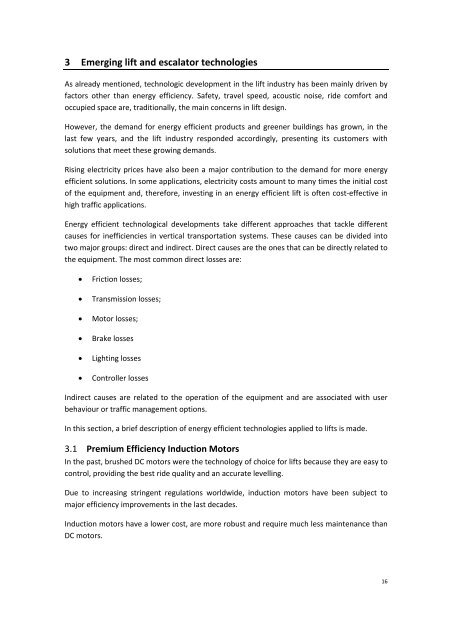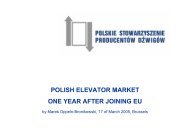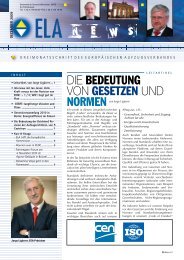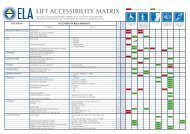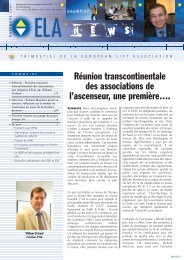WP6-Brochure-E4 brochure - ELA European Lift Association.
WP6-Brochure-E4 brochure - ELA European Lift Association.
WP6-Brochure-E4 brochure - ELA European Lift Association.
Create successful ePaper yourself
Turn your PDF publications into a flip-book with our unique Google optimized e-Paper software.
3 Emerging lift and escalator technologies<br />
As already mentioned, technologic development in the lift industry has been mainly driven by<br />
factors other than energy efficiency. Safety, travel speed, acoustic noise, ride comfort and<br />
occupied space are, traditionally, the main concerns in lift design.<br />
However, the demand for energy efficient products and greener buildings has grown, in the<br />
last few years, and the lift industry responded accordingly, presenting its customers with<br />
solutions that meet these growing demands.<br />
Rising electricity prices have also been a major contribution to the demand for more energy<br />
efficient solutions. In some applications, electricity costs amount to many times the initial cost<br />
of the equipment and, therefore, investing in an energy efficient lift is often cost‐effective in<br />
high traffic applications.<br />
Energy efficient technological developments take different approaches that tackle different<br />
causes for inefficiencies in vertical transportation systems. These causes can be divided into<br />
two major groups: direct and indirect. Direct causes are the ones that can be directly related to<br />
the equipment. The most common direct losses are:<br />
• Friction losses;<br />
• Transmission losses;<br />
• Motor losses;<br />
• Brake losses<br />
• Lighting losses<br />
• Controller losses<br />
Indirect causes are related to the operation of the equipment and are associated with user<br />
behaviour or traffic management options.<br />
In this section, a brief description of energy efficient technologies applied to lifts is made.<br />
3.1 Premium Efficiency Induction Motors<br />
In the past, brushed DC motors were the technology of choice for lifts because they are easy to<br />
control, providing the best ride quality and an accurate levelling.<br />
Due to increasing stringent regulations worldwide, induction motors have been subject to<br />
major efficiency improvements in the last decades.<br />
Induction motors have a lower cost, are more robust and require much less maintenance than<br />
DC motors.<br />
16


